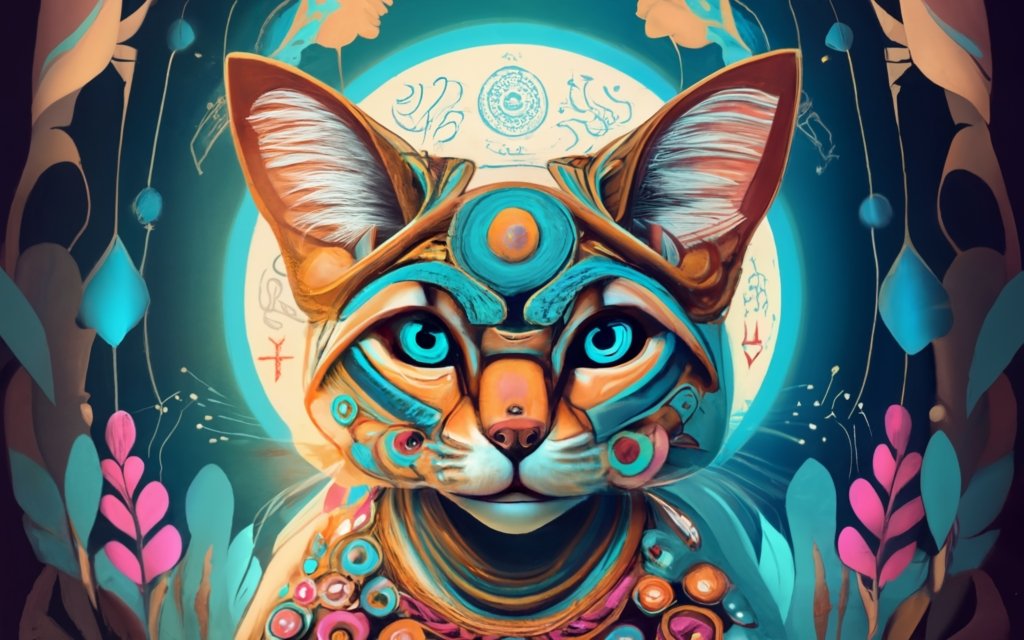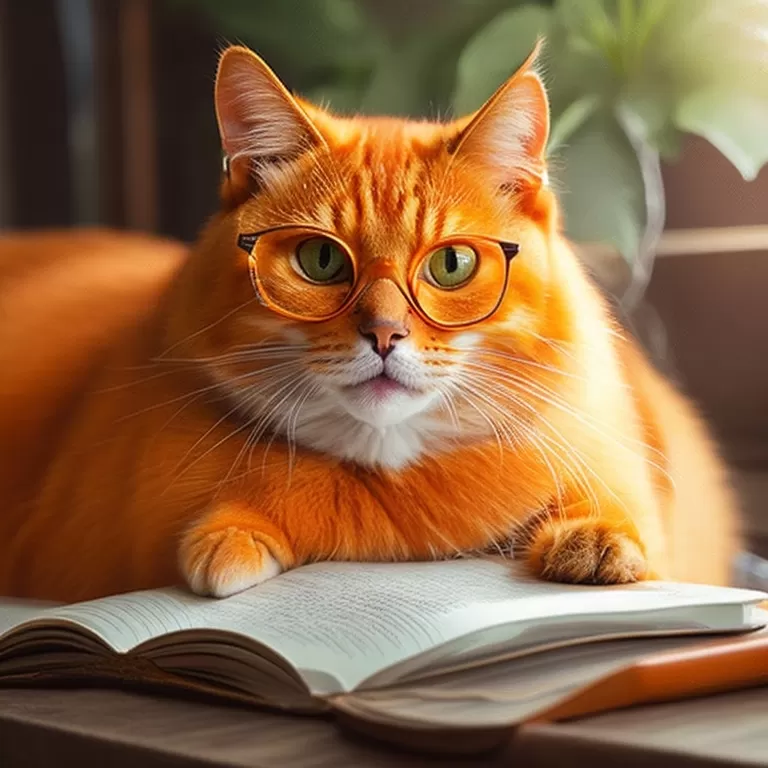
Cats are one of the most popular and beloved animals in the world. They are also one of the most mysterious and fascinating creatures, with a rich and diverse history that spans across continents and civilizations. In this article, we will explore how cats have been viewed and treated in different religions and cultures, from ancient times to the present day. We will look at how cats have been revered and feared, worshiped and persecuted, and how they have influenced and inspired human beliefs and practices.
How Cats Are Viewed in Different Religions
Cats have played an important role in many religions, either as symbols, companions, or agents of the divine. Here are some examples of how cats are viewed in different religions:
Islam
In Islam, cats are admired for their cleanliness and are considered ritually clean. They are allowed to enter homes and even mosques, and food and water that they have touched are still permissible for Muslims to consume.
According to a legend, Muhammad, the prophet of Islam, had a favorite cat named Muezza, who once slept on his robe. Muhammad cut off the sleeve of his robe rather than disturb the cat, and then stroked the cat three times, giving it the ability to land on its feet.
Many Muslims love and respect cats, and some even believe that cats can ward off evil spirits or bring good luck. Some famous Muslim figures who were known for their fondness of cats include Abu Hurairah (whose name means “father of kittens”), a companion of Muhammad who narrated many hadiths about cats; Rumi, a 13th-century Persian poet and mystic who wrote poems about his cat; and Saladin, a 12th-century Kurdish sultan who conquered Jerusalem and had a personal guard of cats.
Ancient Egypt
In ancient Egypt, cats were associated with the goddesses Isis and Bastet, who were often depicted in cat or lioness form. Cats were sacred animals and killing one was a serious crime. The ancient Egyptians mummified their cats and buried them in sacred places.
Cats were also revered for their practical benefits, such as keeping rodents away from grain stores and protecting homes from snakes and scorpions. They were also seen as symbols of grace, beauty, fertility, and mystery. Some ancient Egyptians even wore cat-shaped amulets or tattoos to honor their feline friends.
The ancient Egyptians' love for cats was so strong that they even went to war with other nations over them. According to Herodotus, a 5th-century BC Greek historian, when the Persian king Cambyses II invaded Egypt in 525 BC, he ordered his soldiers to paint cats on their shields and to bring live cats to the battlefield. The Egyptians were so afraid of harming the cats that they surrendered without a fight.
Hinduism
In Hinduism, cats are linked to the goddess Shakti, who represents power, energy, and creativity. Shakti is sometimes depicted riding a tiger or a lion, or holding a cat in her hand. Cats are also associated with the god Shiva, who is said to have created the first cat out of his dreadlocks.
Cats represent wisdom, harmony, and are believed to have a connection with the divine in Hinduism. Having a cat in the home is considered auspicious in Hindu culture.
Buddhism
In Buddhism, cats are regarded as peaceful and meditative animals, who can teach humans how to live in harmony with nature. Cats are also believed to have a special connection with the Buddha, who once saved a cat from a snake bite by giving it his own blood.
Some Buddhist temples keep cats as pets or mascots, such as the famous “cat temple” in Thailand, where dozens of cats roam freely among the monks and visitors. Stroking or feeding these temple cats is considered a meritorious act in Buddhism.
Judaism
In Judaism, cats are considered unclean animals that should not be eaten or touched by observant Jews. However, some Jewish traditions also praise cats for their intelligence and loyalty, and some Jewish legends say that cats were created by God on the sixth day of creation, along with humans and other animals. Some Jewish scholars also suggest that cats may have a soul, and that they can communicate with God in their own language.
Islam
In Islam, cats are admired for their cleanliness and are considered ritually clean. They are allowed to enter homes and even mosques, and food and water that they have touched are still permissible for Muslims to consume.
According to a legend, Muhammad, the prophet of Islam, had a favorite cat named Muezza, who once slept on his robe. Muhammad cut off the sleeve of his robe rather than disturb the cat, and then stroked the cat three times, giving it the ability to land on its feet.
Many Muslims love and respect cats, and some even believe that cats can ward off evil spirits or bring good luck. Some famous Muslim figures who were known for their fondness of cats include Abu Hurairah (whose name means “father of kittens”), a companion of Muhammad who narrated many hadiths about cats; Rumi, a 13th-century Persian poet and mystic who wrote poems about his cat; and Saladin, a 12th-century Kurdish sultan who conquered Jerusalem and had a personal guard of cats.
How Cats Are Viewed in Different Cultures
Cats have also been a part of many cultures, either as divine messengers, angels, or spirit guides. People believed that cats could communicate with the spiritual realm and deliver messages from God or deceased loved ones. Some also believed that cats had healing powers and could protect their owners from harm. Here are some examples of how cats are viewed in different cultures:
Japan
In Japan, cats are seen as lucky and auspicious animals, who can bring fortune and happiness to their owners. One of the most famous symbols of cat luck is the Maneki-neko, or the “beckoning cat”, which is a figurine of a cat with one paw raised, inviting customers or guests into a shop or home. The Maneki-neko is often placed near the entrance or window of a business or residence, and comes in various colors and styles.
Another popular cat symbol in Japan is the Bakeneko, or the “monster cat”, which is a cat that has supernatural abilities, such as shape-shifting, speaking human language, or controlling the dead. The Bakeneko is often depicted as a malicious and vengeful creature, who can curse or haunt humans who mistreat it or its kin. However, some Bakeneko stories also portray them as benevolent and helpful beings, who can reward or assist humans who are kind to them or their kin.
China
In China, cats are associated with both good and bad luck, depending on the context and the color. Generally, cats are considered to be smart and cunning animals, who can sense danger and avoid trouble. However, some people also believe that cats can bring misfortune or evil spirits, especially black cats, who are often linked to witchcraft and death.
One of the most famous cat legends in China is the story of Li Shou, the “god of cats”, who was once a powerful deity who guarded the world from evil. However, Li Shou became lazy and neglected his duties, allowing demons and pests to invade the earth. As a punishment, Li Shou was demoted to a mortal cat, who had to serve humans and catch mice for a living. Li Shou still retained some of his divine powers, but he also developed a rebellious and independent personality, which explains why cats are often aloof and unpredictable.
Europe
In Europe, cats have had a mixed reputation throughout history. In ancient times, cats were respected and admired by the Romans and the Celts, who saw them as symbols of freedom, courage, and wisdom. However, in medieval times, cats were often associated with witchcraft, evil, and the devil. They were persecuted and killed by people who feared their supernatural powers and influence. Some legends said that witches could shape-shift into cats or use them as familiars.
However, not all Europeans hated cats. Some people still appreciated their companionship and usefulness, especially sailors and farmers, who valued their ability to catch rats and mice. Some cultures also had positive beliefs about cats, such as the Irish, who believed that black cats could bring good luck if they crossed your path from right to left; or the Scottish, who believed that a strange black cat on your porch could signify prosperity and wealth.
Conclusion
Cats are amazing animals that have been a part of human history for thousands of years. They have been worshiped as gods, feared as witches, and loved as pets in various religions and cultures. They have influenced and inspired human beliefs and practices in many ways.
Cats are also unique and individual creatures, who have their own personalities and preferences. They can be loyal and affectionate, or independent and aloof. They can be playful and curious, or calm and serene. They can be friendly and sociable, or shy and solitary.
No matter how you view cats or what you believe about them, one thing is certain: cats are fascinating and wonderful beings that deserve our respect and admiration.
FAQ
What are some common myths about cats?
Some common myths about cats are:
- Cats have nine lives: This myth may have originated from the ancient Egyptians, who believed that cats were sacred to the sun god Ra, who had nine lives; or from the medieval Europeans, who observed that cats could survive falls from heights. In reality, cats do not have nine lives.
- Black cats are bad luck: This superstition originated in medieval Europe, where black cats were associated with witchcraft. However, in many other cultures, black cats are seen as good luck.
- Cats are aloof and uncaring: While some cats do enjoy solitude, most cats form strong bonds with their human families. Cats show affection in subtle ways.
- Cats hate water: While some cats dislike baths, many cats enjoy playing with water and can even swim. The Turkish Van breed is known for swimming.
- Cats always land on their feet: Cats have great aerial dexterity due to their inner ear canals, but they can still injure themselves from falls at great heights.
- Cats can see in complete darkness: Cats can see much better than humans in low light but they cannot see in total darkness or through solid objects.
- Cats drink milk: Most cats lose the ability to digest milk after kittenhood. Cow's milk can give them diarrhea.
